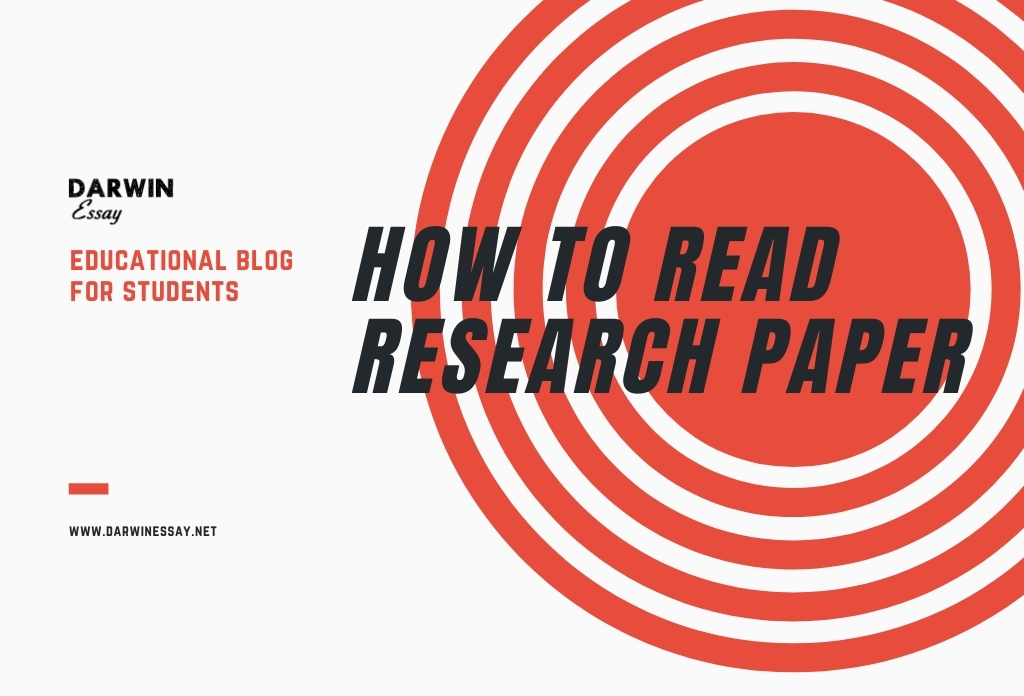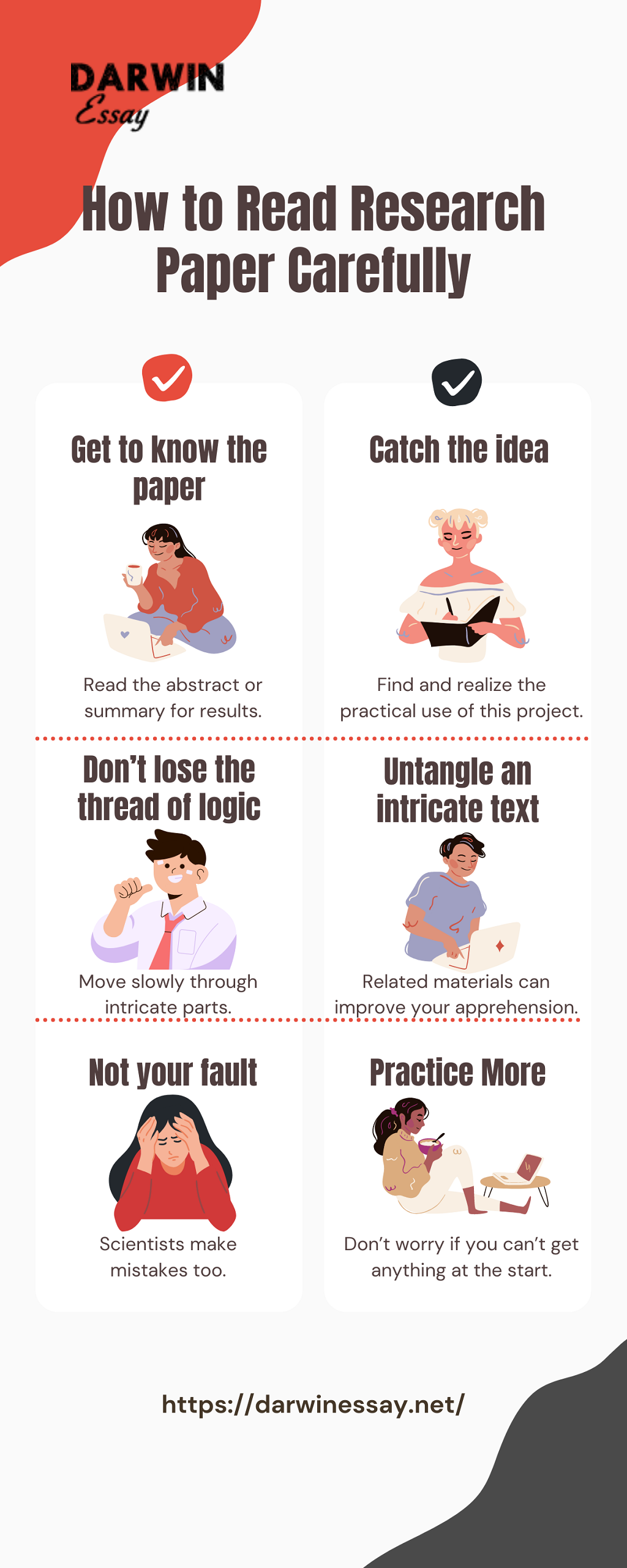Problem: Scholarly Materials are Too Complicated
FOR STUDENTS
The skill of reading papers requires training, indeed. But learning their structure is getting half of the work done. There are two main parts to focus on in any study: issue and arguments. When you manage to extract these keys, you will notice an improvement in your reading speed.

How to Read Carefully?
You can’t understand research straight away. It takes two and more repeated readings to grasp all the points. Plus, you will return to significant chapters for references while writing a paper or essay.

-
Get to know the paper
Skim down the table of contents, focusing on headings that convey significant information and learning words you don’t understand. Read the abstract or summary for results, the main thesis, and the main arguments you will discover further in the text. Then scroll the writing itself, noticing its length, format, chapter structure, and graphs with charts.
-
Catch the idea
The target problem of the study can be contained in a one-sentence thesis. But it’s just not enough for the full picture. The scholarly paper reflects many questions deriving from the issue, which are just as important. Also, you may find it useful to realize the practical use of this project and its contribution to the field. Otherwise, you won’t understand the purpose of reading it and thus will be less motivated.
-
Don’t lose the thread of logic
If you stare blankly at the paragraph without a hint of what’s going on, stop and return to the heading. Firstly, identify the topic of conversation, which is your most important step. Only then proceed to its discussion part.
When the researcher presents a piece of evidence, make sure you know what it relates to. You can always return a few sentences back and reread the problem. But you won’t find a strict template: the evidence is usually a long chain of reasons, intersected with words of other scientists and presenting controversial opinions. Just move slowly through intricate parts, digesting every new bit of information.
-
Untangle an intricate text
Not all scholars write with their readers in mind. Sometimes, they leave us with a ciphered instruction, which even professors find daunting to unravel from the first try. If you have enough sources besides this one, consider moving it to the end of the list and returning if you’re lacking information for an extensive picture. Plus, related materials can improve your apprehension of the piece.
All in all, it’s of the same or even higher importance to highlight the thesis, topics and subtopics, and reasons with evidence. Put your efforts into digesting the main content and not some void transitions.
-
Not your fault
If you’re desperately trying, but nothing happens, think about what blocks your efforts. Scientists are humans, too, and they can make mistakes. They can include proof that doesn’t explain anything, present a one-sided unconvincing argument, or state the topic not clearly and leave readers in confusion. You must objectively identify fallacies of the paper and mention them in your research paper.
Practice More
The skill of reading primary sources comes with writing practice. Don’t worry if you can’t get anything at the start. You may read the text a few more times than it usually takes, but at least you’ll really understand what’s going on. Moreover, by analyzing studies, you contribute to the structure of your own research: real examples give you more experience than plain instructions.


